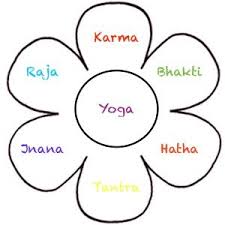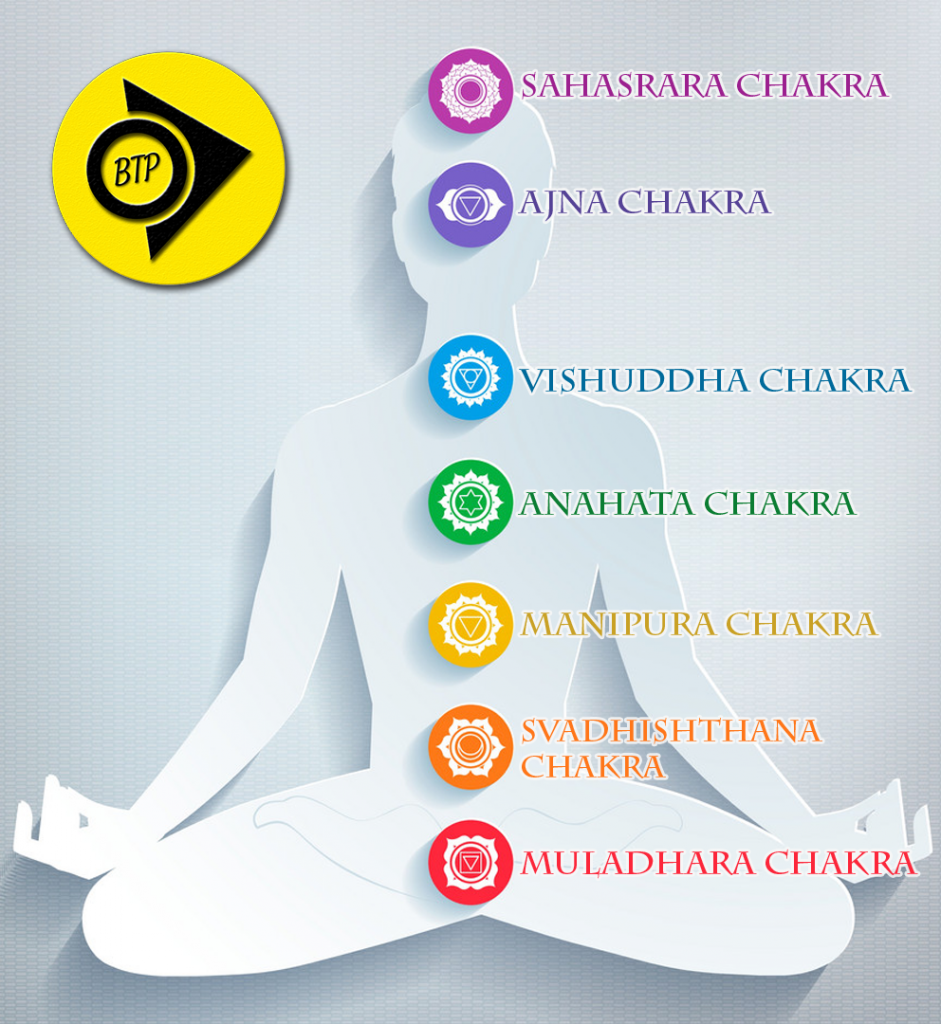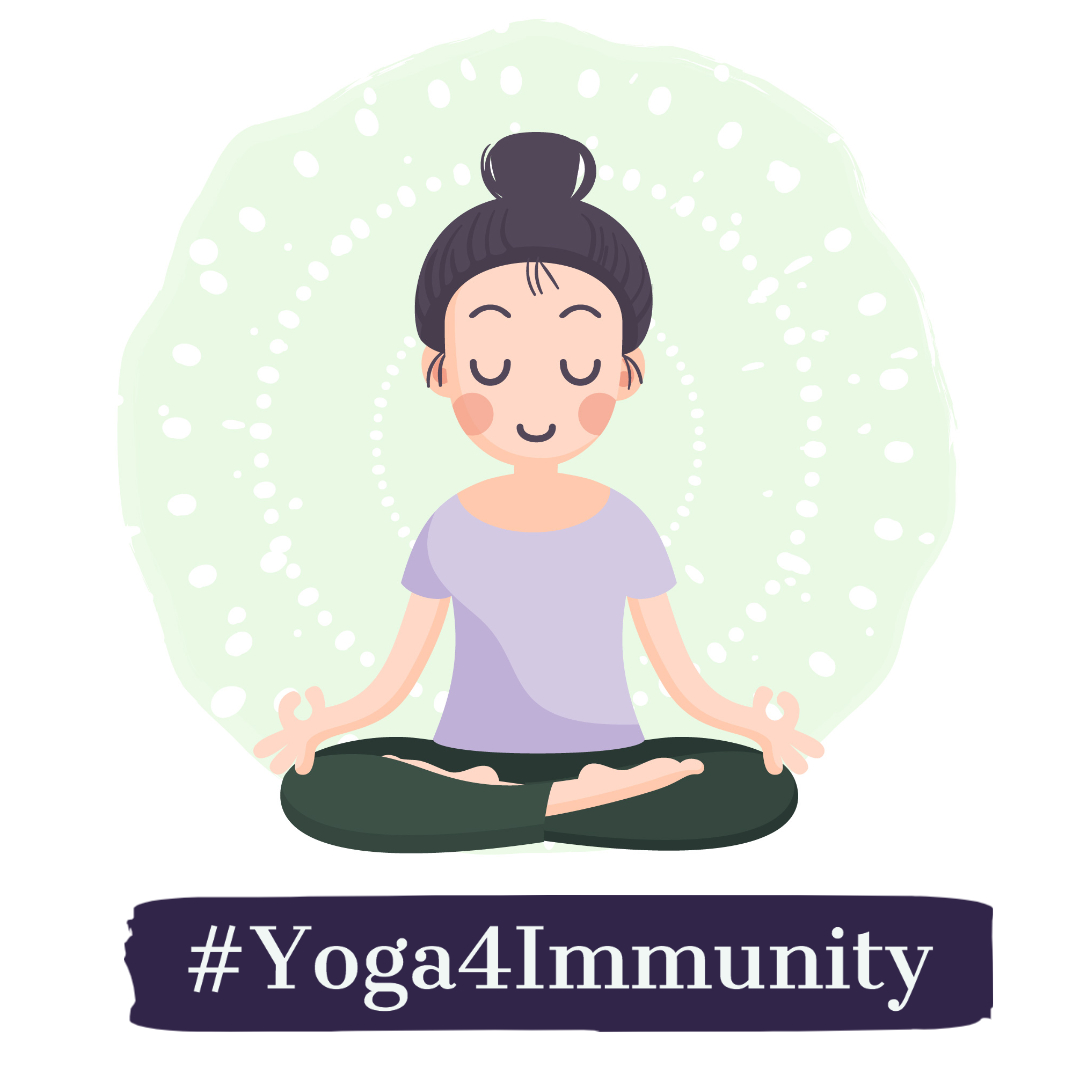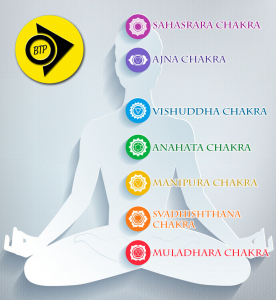Yoga, a 5000 years old Indian practice of exercise can help to boost immunity and to keep your chakras balanced and aligned. The simple DO AT HOME postures, breathing techniques and meditation can improve your mental and physical health and boost your immunity. In addition, it relives you from stress which is leading factor of depression and help you relax your mind and body. In addition, it has recently become popular as a form of physical exercise based upon poses that promote improved control of the mind and body and enhance well-being.
Since the beginning of the modern world, the Indian art of yoga has expanded to all corners of the globe. While it is now a popular form of exercise and meditation, this has not always been a case.
Yoga Philosophy :

To convey its spiritual message and guide sessions, yoga often uses the imagery of a tree with roots, a trunk, branches, blossoms, and fruits. Each “branch” of yoga represents a different focus and set of characteristics.
The six branches are:
- Hatha Yoga: This is the physical and mental branch designed to prime the mind and body.
- Raja Yoga: This branch involves meditation and strict adherence to a series of disciplinary steps known as the “eight limbs” of yoga.
- Karma Yoga: This is the path of service that aims to create a future free from negativity and selfishness.
- Bhakti Yoga: This aims to establish the path of devotion, a positive way to channel emotions and cultivate acceptance and tolerance.
- Jnana Yoga: This branch of yoga is about wisdom, the path of a scholar, and developing the intellect through study.
- Tantra Yoga: This is the pathway of ritual, ceremony or consummation of a relationship.

Approaching yoga with a specific goal in mind can help a person decide which branch to follow.
Chakras:
chakras means spinning wheel. Yoga maintains that chakras are center points of energy, thoughts, feelings, and the physical body. According to yogic teachers, chakras determine the way people experience reality through emotional reactions, desires or aversions, level of confidence or fear and even physical symptoms and effects. When energy is blocked in a chakra, it is said to trigger physical, mental, or emotional imbalances that manifest in symptoms such as anxiety, lethargy, or poor digestion. Also, “Asanas” are the many physical positions in Hatha Yoga. Hence, people practice asanas to free energy and stimulate an imbalanced chakra.
There are seven major Chakras each with their own focus:

- Sahasrara: The “thousand-petaled” or “crown” chakra represents the state of pure consciousness. This chakra is located at the crown of the head, and the color white or violet represents it. Also, Sahasrara involves matters of inner wisdom and physical death.
- Ajna: The “command” or “third-eye chakra” is a meeting point between two important energetic streams in the body. Ajna corresponds to the colors violet, indigo, or deep blue, though traditional yoga practitioners describe it as white. In addition, the ajna chakra relates to the pituitary gland, which drives growth and development.
- Vishuddha: The color red or blue represents the “especially pure” or “throat” chakra. Moreover, practitioners consider this chakra to be the home of speech, hearing, and metabolism.
- Anahata: The “unstruck” or “heart” chakra relates to the colors green and pink. Furthermore, key issues involving anahata include complex emotions, compassion, tenderness, unconditional love, equilibrium, rejection, and wellbeing.
- Manipura: Yellow represents the “jewel city” or “navel” chakra. Practitioners connect this chakra with the digestive system, as well as personal power, fear, anxiety, developing opinions, and tendencies towards an introverted personality.
- Svadhishthana: Practitioners claim that the “one’s own base” or “pelvic” chakra is the home of the reproductive organs, the genitourinary system, and the adrenal gland.
- Muladhara: The “root support” or “root chakra” is at the base of the spine in the coccygeal region. It is said to contain our natural urges relating to food, sleep, sex, and survival, as well as the source of avoidance and fear.
Types of Yoga for Immunity:
Modern yoga has evolved with a focus on exercise, strength, flexibility and breathing. It can help boost physical and mental well-being. In addition, regularity in yoga can also be an important factor for immunity.
Types and Styles of yoga include the following:
- Ashtanga yoga: This type of yoga uses ancient yoga teachings. However, it became popular during the 1970s. Ashtanga applies six established sequences of postures that rapidly link every movement to breath.
- Bikram yoga: Also known as “hot” yoga, Bikram occurs in artificially heated rooms at temperatures of nearly 105 degrees and 40 percent humidity. It consists of 26 poses and a sequence of two breathing exercises.
- Hatha yoga: This is a generic term for any type of yoga that teaches physical postures. In addition, “Hatha” classes usually serve as a gentle introduction to the basic yoga postures.
- Iyengar yoga: This type focuses on finding the correct alignment in each pose using a range of props, such as blocks, blankets, straps, chairs, and bolsters.
- Jivamukti yoga: Jivamukti means “liberation while living.” This type emerged in 1984 and incorporates spiritual teachings and practices that focus on the fast-paced flow between poses rather than the poses themselves.
- Kripalu yoga: This type teaches practitioners to know, accept, and learn from the body. A student of Kripalu learns to find their own level of practice by looking inward. Therefore, the classes usually begin with breathing exercises and gentle stretches, followed by a series of individual poses and final relaxation.
- Kundalini yoga: Kundalini means “coiled, like a snake.” Kundalini yoga is a system of meditation that aims to release pent-up energy.
- Power yoga: In the late 1980s, practitioners developed this active and athletic type of yoga, based on the traditional ashtanga system.
- Sivananda: This is a system based on a five-point philosophy that maintains that proper breathing, relaxation, diet, exercise, and positive thinking work together to form a healthy yogic lifestyle. In addition, it uses the same 12 basic asanas, bookended by sun salutations and savasana poses.
- Viniyoga: Viniyoga can adapt to any person, regardless of physical ability. Viniyoga teachers require in-depth training and tend to be experts on anatomy and yoga therapy.
- Yin: This is a quiet, meditative yoga practice, also called taoist yoga. Yin yoga allows the release of tension in key joints, including:
- Ankles
- Knees
- Hips
- Whole back
- Neck
- Shoulders
Yin poses are passive, meaning that gravity shoulders most of the force and effort.
- Prenatal yoga: Prenatal yoga uses postures that practitioners have designed for people who are pregnant. It can support people in getting back into shape after pregnancy as well as supporting health during pregnancy.
- Restorative yoga: This is a relaxing method of yoga. In short, a person spends a restorative yoga class in four or five simple poses, using props like blankets and bolsters to sink into deep relaxation without exerting any effort in holding the pose.
How does Yoga boost Immunity ?
Contrary to popular belief, germs, rather than cold weather itself cause sickness and what makes us susceptible to those germs is lack of sleep, nutrition and life stress all lead to a weakened immune system and vulnerability to sickness. Stress more than anything leads to a breakdown in the body’s ability to defend itself against bacteria and viruses. When stressed, the hormone Cortisol stays in the blood for extended periods of time, which the body develops resistance to, leading to increased inflammation. Hence, Yoga is said to be a helpful way to boost your immunity and decrease inflammation in your body.
When sick, antibiotics and other medicines can help you recover. However, what the medicine fails to do is improve the body’s immune system. This is where yoga comes to the rescue as Yoga is one of the most effective and time tested natural immunity boosters that can lead to a healthy, sickness-free body. It lowers stress hormones and strengthens the nervous system while also stimulating the lymphatic system, which removes toxins from the body. Moreover, Yoga also calms the mind and can contribute to deeper, regulated sleep, which is crucial for wellness. Sleep is one of the most important factors in healing and maintaining a healthy immune system.
Yoga Poses for Immunity :
These are the yoga poses that will assist you in boosting your immunity:
1. Shishuasana (Child Pose)
- Firstly, sit on your heels.
- Secondly keeping your hips on the heels, bend forward, and lower your forehead to the floor.
- Then keep the arms alongside your body with hands on the floor, palms facing up. (If this is not comfortable, you can place one fist on top of another and rest your forehead on them.)
- Gently press your chest on the thighs.
- Hold.
- Slowly come up to sit on the heels, uncurling vertebrae by vertebrae and relax.
Shishuasana is an excellent pose to decongest the chest and relax the mind.
2. Setu Bandhasana (Bridge Pose)
- To begin, lie on your back.
- Firstly, fold your knees and keep your feet hip distance apart on the floor, 10-12 inches from your pelvis, with knees and ankles in a straight line.
- Secondly keep your arms beside your body, palms facing down.
- Then after, Inhale and slowly lift your lower back, middle back and upper back off the floor, gently roll in the shoulders, touch the chest to the chin without bringing the chin down, supporting your weight with your shoulders, arms and feet. Feel your bottom firm up in this pose. Both the thighs are parallel to each other and to the floor.
- If you wish, you could interlace the fingers and push the hands on the floor to lift the torso a little more up, or you could support your back with your palms.
- Keep breathing easily.
- Hold the posture for a minute or two and exhale as you gently release the pose.
Setu Bandhasana opens the heart and improves blood circulation, increasing energy in the body.
3. Halasana (Plough Pose)
- Lie on your back with your arms beside you, palms downwards.
- As you inhale, use your abdominal muscles to lift your feet off the floor, raising your legs vertically at a 90 degree angle.
- Continue to breathe normally and support your hips and back with your hands, lift them off the ground.
- Allow your legs to sweep in a 180 degree angle over your head till your toes touch the floor. Your back should be perpendicular to the floor. This may be difficult initially, but make an attempt for a few seconds.
- Tip: Do this slowly and gently. Ensure that you do not strain your neck or push it into the ground.
- Hold this pose and let your body relax more and more with each steady breath.
- After about a minute (a few seconds for beginners) of resting in this pose, you may gently bring your legs down on exhalation.
- Tip: Avoid jerking your body, while bringing the legs down.
Plow pose stimulates the thyroid gland, strengthening the nervous system.
4. Bhujangasana (Cobra Pose)
- Lie on your stomach with your toes flat on the floor and forehead resting on the ground.
- Keep your legs close together, with your feet and heels lightly touching each other.
- Place your hands (palms downwards) under your shoulders, keeping your elbows parallel and close to your torso.
- Taking a deep breath in, slowly lift your head, chest and abdomen while keeping your navel on the floor.
- Pull your torso back and off the floor with the support of your hands.
- Checkpoint: Are you putting equal pressure on both the palms?
- Keep breathing with awareness, as you curve your spine vertebrae by vertebra. If possible, straighten your arms by arching your back as much as possible; tilt your head back and look up.
- Checkpoint: Are your shoulders away from your ears? Keep your shoulders relaxed, even if it means bending your elbows. With regular practice, you will be able to deepen the stretch by straightening the elbows.
- Ensure that your feet are still close together. Keep smiling and breathing. Smiling Cobras!
- Don’t overdo the stretch or overstrain yourself.
- Breathing out, gently bring your abdomen, chest and head back to the floor.
5. Dhanurasana (Bow Pose)
- Lie on your stomach with your feet hip-width apart and your arms by the side of your body.
- Fold your knees and hold your ankles.
- Breathing in, lift your chest off the ground and pull your legs up and back.
- Look straight ahead with a smile on your face. Curve your lips to match the curve of your body!
- Keep the pose stable while paying attention to your breath. Your body is now taut as a bow.
- Continue to take long deep breaths as you relax in this pose. But don’t get carried away! Do not overdo the stretch.
- After 15 -20 seconds, as you exhale, gently bring your legs and chest to the ground. Release the ankles and relax.
6. Matsyasana (Fish Pose)
- Lie on your back. Your feet are together and hands relaxed alongside the body.
- Place the hands underneath the hips, palms facing down. Bring the elbows closer toward each other.
- Breathing in, lift the head and chest up.
- Keeping the chest elevated, lower the head backward and touch the top of the head to the floor.
- With the head lightly touching the floor, press the elbows firmly into the ground, placing the weight on the elbow and not on the head. Lift your chest up from in-between the shoulder blades. Press the thighs and legs to the floor.
- Hold the pose for as long as you comfortably can, taking gentle long breaths in and out. Relax in the posture with every exhalation.
- Now lift the head up, lowering the chest and head to the floor. Bring the hands back along the sides of the body. Relax.
Tips to Stay Healthy:
0. Do Yoga for Immunity
Practice Yoga regularly. Start slow and once you are regular for 3 months, you can increase the time for practicing. Regularity in your day to day life and yoga can play an important role to boost your immunity.
1. Detoxify your body.
Detoxify your body by consuming things that will cleanse your body. for example, drinking a glass of water with lemon. Detoxifying your body helps you feel good throughout the day, assists with weight loss, you are able to control your cravings and your body gets a good reboot.
2. Get a sound sleep of 6 to 8 hours.
While you are asleep, your body is hard at work. During sleep, your body rebuilds muscles that you’ve worn out during the day and kills harmful plagues and waste that are produced in the brain. Your mind also processes and responds to emotions and experiences from the day and commits them to your memory. Sleep is also essential to regulating your emotions. In fact, being sleep deprived for just one night can increase your emotional response to negative feelings by 60%. Lastly, sleep plays a vital role in regulating your circadian rhythm (internal clock).
3. Include more green vegetables in your diet and eat on time.
Green vegetables are high in antioxidants. They are rich in vitamin A which is good for building your body’s natural defences, vitamin C for healthy skin and bones and vitamin K to help your body heal itself quickly when necessary. In addition to these vitamins, they are also rich in potassium and iron. Green vegetables are also full of minerals. They improve your metabolism and improve your eyesight. Lastly they keep you hydrated.
4. Make sure your diet is getting you your daily amount of vitamins and minerals.
Vitamins and minerals are considered essential nutrients because they perform hundreds of roles in the body. They help shore up bones, heal wounds, and bolster your immune system. They also convert food into energy, and repair cellular damage.
5. Adopt Ayurveda
This will assist you by decreasing the processed foods in your diet. In addition, it promotes mindful eating and has many health benefits. This may also be effective for weight loss.
6. Follow basic hygiene practices.
Wash your hands with soap frequently and at least for 20 seconds.
7. Exercise and meditate regularly.
Exercise also helps increase the flow of oxygen and blood, which assists in delivering more of those biochemicals boosts which help your brain feel happy. Meditation activates your parasympathetic nervous system which is responsible for calming down our central nervous system.
Wrapping up
Yoga has many other physical and mental benefits too. So roll out your yoga mat and discover the combination of physical and mental exercises that for thousands of years have hooked yoga practitioners around the globe. You don’t have to be a yogi or yogini to reap the benefits. Whether you are young or old, overweight or fit, yoga has the power to calm the mind and strengthen the body.




Pingback: Sushant Singh Rajput - #JusticeForSSR | Life | BTP
Pingback: Mosquitoes fighting Dengue in Singapore | Wolbachia | Health | BTP
Pingback: Orthorexia- Obsession With Health | Social Media | Health | BTP
Pingback: Yoga And The 13 Types | Health | Life | Inspiration | BTP
Pingback: Covid-19 And It's Different Variants | Health | Life | BTP
Pingback: Eat to be fit-Covid Special Food Guide- For Increased Immunity | BTP